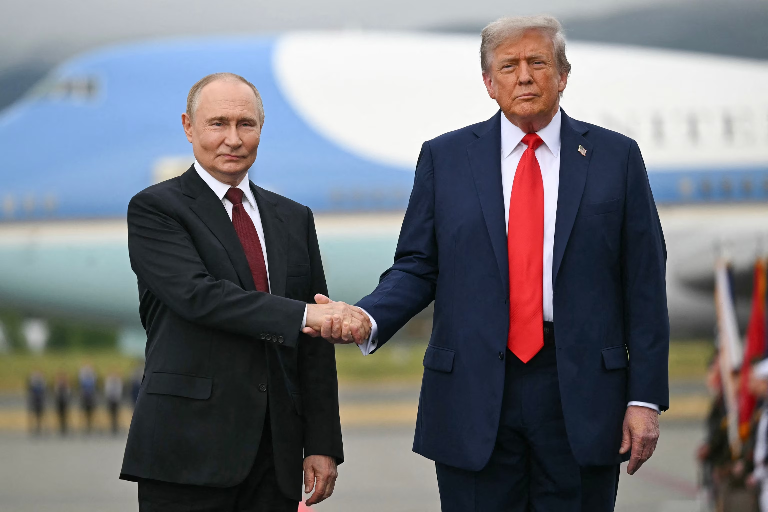
- The Trump–Putin summit in Alaska epitomised the now-typical 21st-century style of summitry: heavy on symbolism, light on concrete outcomes.
- Independent observers and policy centres noted that the meeting appeared to have done little to stop fighting, saying the leaders “left Alaska without a deal.
- Diplomacy in 2025 exists within an overflowing media space where negotiations mean one thing unless a wider public effect changes this.
- A headline-grabbing meeting with a historic adversary provides instant rewards for an incumbent U.S. president keen to boost approval ratings: a photo op, a success story, and high-profile leadership on a contentious issue of international policy.
Proponents sought to cast President Vladimir Putin’s rare visit to U.S. soil and his three-hour meeting with President Donald Trump in Anchorage in August 2025 as a potential flashpoint that could halt the conflict in Ukraine. The summit itself, however, offered much more symbolism than substance as a practical matter. Amid differences in global alignments, battle lines long set in Ukraine and turbulence at home in Washington, the Anchorage meeting highlighted how diplomacy on a grand scale can result in dramatic headlines, even as it fails to solve underlying problems. In so doing, this article unpacks the geopolitical context of the meeting and assesses its lack of deliverables, situating the summit within concurrent domestic scandals, including the ongoing squabble over the publication of what we can now only refer to as the Epstein files, to elucidate that this was more of an attempted photo op than a peace-making effort.
Russia’s Strategic Position: From Isolation to Resilience
The impact has been cushioned by the reorientation of Russian exports and commodities, especially energy, eastward and southward, into China and India in particular. The role of Russia in driving global commodity flows and turning towards non-Western financial mechanisms (including intensified cooperation with the BRICS partners as part of these efforts) has been noted by analysts as an indication of what limited economic pressure was still available to be exerted on Moscow. It also comes as many reputable assessments show growing structural pressures: slower growth forecasts, military-industrial supply-side constraints, and the long-term costs of a wartime economy. The two sides of this coin, resilience on the one hand, vulnerabilities mounting on the other, are key to understanding how Moscow bargains in bilateral negotiations.
Why a Yes to Meet Trump Was Important in Moscow
A U.S. summit on American soil for the Kremlin was not simply about two leaders face to face; it was an edit of newsreel normalcy, the quintessence of great power politics. Even by the cynical standards of the dubbed “three men in a room” summit, commentators cautioned ahead of time that merely staging Putin’s arrival was a win for Russia, automatically lifting it from its recent pariah status under sanctions. In Moscow’s eyes, time in front of the U.S. president can be transformed into room to manoeuvre over Europe, leverage over energy markets, and influence in a variety of multilateral fora without having to give concessions on Ukraine itself. If you are structurally unbalanced, then the likelihood is small that a rapid, unconditional ceasefire will result from one meeting.
Transactional Outcome in the Resolution From the Summit
The meeting ended with no ceasefire, road map, date, or modalities to end hostilities verified. Though both leaders adopted a more conciliatory tone in public, with Trump calling the talks “productive” and Putin saying he felt an “understanding” had emerged, the lack of detail shared leaves those statements largely notional, as neither leader announced any tangible sacrifices. Independent observers and policy centres noted that the meeting appeared to have done little to stop fighting, saying the leaders “left Alaska without a deal.” Such an outcome should not come as too much of a surprise, given the simple fact that Kyiv was never there and could not agree to trade pretences for the kind of territorial settlements Moscow would demand. Nor are there any regional political forces either in Europe or Ukraine willing to accept such a deal if it came off sounding like nothing other than a sellout.
Zelensky, the Oval Office dispute, and Credibility Gaps
Diplomacy in 2025 exists within an overflowing media space where negotiations mean one thing unless a wider public effect changes this. A showdown left visible in the Oval Office earlier in the year, when President Trump browbeat his Ukrainian counterpart, Volodymyr Zelensky, as news cameras snapped away, exposed rifts over how to deal with Kyiv and compounded a sense among many that Washington was ever-changing. This undermines U.S. credibility with Kyiv as a clear security partner and complicates any back-channel calculations for what the parameters of a too-near-future settlement could be. Successful diplomatic strategy necessitates trusted negotiators, and a grave dispute on live TV with unilateral press moments, instead of private, sustained dialogues throughout Kyiv and into Europe, puts that credibility at risk.
A genuine war stoppage in Ukraine would have required four related developments that the bilateral Anchorage summit could not, on its own, provide: credible security assurances to Kyiv; a sustained, recognised monitoring system for the ceasefire; a multilateral governing structure to harmonise Western sanctions with governance incentives; and a formal Ukrainian agreement with any territorial resolutions.
When Politics At Home Takes Centre Stage
As usual in Washington, politics loomed large. A headline-grabbing meeting with a historic adversary provides instant rewards for an incumbent U.S. president keen to boost approval ratings: a photo op, a success story, and high-profile leadership on a contentious issue of international policy. Many commentators and analysts observed that the summit of political optics was nothing more than, without verified results, a spectacle designed to demonstrate dramatic action without actually rolling up sleeves to hammer out the core of any meaningful settlement, one that would have to be signed off by Ukraine itself and its partners.
Meanwhile in Washington, heated debates were playing out over the release of documents related to investigations involving Jeffrey Epstein; reporting indicates continued congressional interest and differing public narratives about what’s in the so-called Epstein files. Critics noted that international interviews can be used to steer public focus away from domestic issues that have not yet found solutions. Presenting this theory as an intentional tactic strays towards overreach; there is scant hard proof that foreign summits are being put on specifically to change the subject, though it seems equally plausible that historically beleaguered administrations welcome any distraction from a politically fraught moment.
Missing Strategic Pieces
A genuine war stoppage in Ukraine would have required four related developments that the bilateral Anchorage summit could not, on its own, provide: credible security assurances to Kyiv; a sustained, recognised monitoring system for the ceasefire; a multilateral governing structure to harmonise Western sanctions with governance incentives; and a formal Ukrainian agreement with any territorial resolutions. The summit did not establish any of these elements. The Anchorage meeting may thus have set in motion a dialogue, always useful, but it failed to establish the institutional architecture and allied coherence indispensable for transforming dialogue into enduring peace.
The Trump–Putin summit in Alaska epitomised the now-typical 21st-century style of summitry: heavy on symbolism, light on concrete outcomes. This reflected real changes in the global set of balances as much as anything prescribed in the Minsk pact, adjustments to sanctions on Russia, closer ties with non-Western partners, and a U.S. foreign policy made subordinate to domestic political exigencies. Wary Ukrainians merged into an equally reluctant Europe. If what survives the meeting is an opening for further diplomacy, that qualifies as a minor achievement. If, on the other hand, the summit is primarily useful as political theatre, a chance to make headlines and distract attention from trouble at home, then it will have done little to change the most immediate strategic facts: the war goes on, and for all our talk of peace, actual peace-making still lies ahead.
References:
- Reuters, “Trump-Putin summit yields no deal on ending war in Ukraine,” Steve Holland, Andrew Osborn and Darya Korsunskaya, 16 August 2025. -Straight reporting on the meeting’s conclusion and the absence of a ceasefire or formal deal. Reuters
- Associated Press, “Takeaways from the Trump–Putin meeting: No agreement, no questions but lots of pomp,” 15–16 August 2025. -Independent summary emphasising symbolism over substance. AP News
- The Guardian, “No deal, and no answers, after brief Trump–Putin talks on Ukraine in Alaska,” 15 August 2025. -Coverage of reactions from Europe, Ukraine and U.S. lawmakers. The Guardian
- CBS News, “Here’s the transcript of what Putin and Trump said in Alaska,” 15 August 2025. -Useful for verbatim quotations and the public remarks chronology. CBS News
- PBS NewsHour, “Live updates: Trump meets with Putin in Alaska,” 15–16 August 2025. -Live reporting and context for the summit timeline and immediate follow-ups. PBS
Shashank is a Master’s student in Diplomacy, Law, and Business at O.P. Jindal Global University. He is also a researcher and coordinator at the Center for Global South and the Center for Southeast Asian Studies. His research interests include Southeast Asia, Chinese foreign policy, India’s Act East Policy, and global security dynamics. Views expressed are the author’s own.
